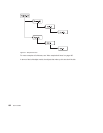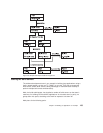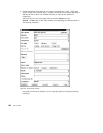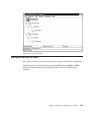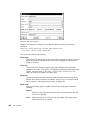
mvspool
For MVS builds
pool1 For normal OS/2 builds
pool2 For fast, high-priority OS/2 builds
Each pool is formed as Mark starts build servers and assigns them to it. He starts the
following build server (bldserv2):
teamcbld -b bldserv2 -p pool1 -e os2
The parameters specify the following:
-p The build server is assigned to the pool named pool1.
-e The environment is os2.
Use the teamcbld command to start the build server when the family server has already
been started. To start the family server along with the build server, you can use the
teamcd command.
Creating builders and parsers
For the parts of the application that are written in C language, Mark creates the
following:
v A builder named c_compiler, to do the compiles
v A builder named c_linker, to do the links
v A parser named c_parser, to check for dependencies
For both builders Mark specifies os2 as the Environment, the same as that of the build
server (bldserv2) started earlier. Build events that use these builders (c_compiler and
c_linker) can take place on this build server.
After he creates the builders and parsers for the applications, Mark spreads the
following information to the programmers who will be using them:
v The names of the build pools
v The names and purposes of the builders and parsers
Creating the build tree for the application
At this point, Greg begins defining the build tree for his portion of the application, as
shown in Figure 57 on page 182. He has already created the files hello.c, hello.h, bye.c,
and bye.h in the TeamConnection database. Now he does the following:
1. Creates a place-holder part for the output of the link step. This file, msgcat.exe, is
the target for the entire build, the output of linking hello.obj and bye.obj using the
184 User’s Guide









